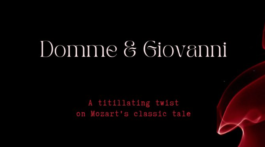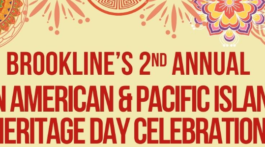Author and Emerson College professor Megan Marshall recently appeared at the Brookline Booksmith to promote the paperback release of her critically acclaimed biography Margaret Fuller: A New American Life. The New York Times proclaimed that the book “delivers a lovely and bumpy coming-of-age story, one of the best such stories nineteenth-century America has to offer.” I spoke with Ms. Marshall by phone and asked her why she thinks there is still so much interest in the journalist and teacher Margaret Fuller.
Brookline Hub: Why the subtitle: A New American Life?
Megan Marshall: Margaret Fuller was living what was a new life for women, and really for everyone at that time. Margaret and her friends, transcendentalists like Emerson and Thoreau, were more adventurous [than their forebears.] America was also a new republic then. There have been other biographies about Margaret Fuller but this was a new way of seeing her and I wanted that implied by the subtitle. The book has a more narrative quality that came from reading her letters and papers. It was not hard to conjure the language after reading her writings.
BH: Why do you think Margaret’s father, politician and lawyer Timothy Fuller, chose Margaret as his favorite student and protégé over her younger brothers? He sent her to school and was constantly testing her. But when it came time for the boys’ education, he asked Margaret to teach them.
MM: As a young girl, Margaret was malleable—Timothy could shape her in his own image. But he also gave her credit for having a mind. The boys didn’t respond to their father’s method of teaching and were not as intellectual. Father and daughter had a bond. He believed in Margaret, but he was also keeping her under his thumb [by having her teach her younger brothers.]
BH: What inspired you to choose Margaret Fuller as the subject of your second biography?
MM: When I wrote The Peabody Sisters it was all new research. With Margaret Fuller, I didn’t have to prove she was worth writing about. She had a really dramatic life story.
BH: How did you go about researching Margaret Fuller? It reads somewhat like a novel, a quality that makes it even more compelling. In the introduction you mention deciding against writing a strictly “public account” of Margaret Fuller. Why? How did you get inside Margaret’s head and understand her so fully, as if she were a heroine in a novel?
MM: Harvard University’s Houghton Library has all of Margaret’s papers, letters, and journals—even her Roman journal that survived the shipwreck [Margaret was killed in a shipwreck off Fire Island in 1850.] It was important to me to see the first letter. I wanted to see what her handwriting looked like. I was very interested in an essay she wrote that was inspired by the line “They can conquer who believe they can.” This essay was never before in print. This is the one essay she saved. I wanted to see an example of the corrections her father had made to it. You can see the symbiotic relationship they had in the kinds of corrections he made. I did include some new source material, including two newly discovered letters by Margaret Fuller.
My challenge was to write a biography that reads like a novel. I think the best biographies are the ones that—like a novel—go through life with the person. It’s history through the lives of people who lived it. Movements like Transcendentalism and Unitarianism—it was not my intention to explain them but for the reader to experience them along with Margaret. There were times when I conjectured but I always made it clear when I was conjecturing. Margaret had a very well documented life. Her writings are full of emotional outpourings. In this book—even more than in the Peabody biography—the question was what to leave out. There was an enormous trove of material. I think people identify with Margaret because there are aspects of her life that are familiar to bookish people—when she was a young girl she was a tomboy, always reading in her spare time. Readers follow her trajectory and are on her side.
BH: Do you have any favorite historical biographies? What are you reading now?
MM: I like Jean Strouse’s biography of Alice James; Nancy Milford’s biography of Zelda Fitzgerald, Zelda;Everybody Was So Young by Amanda Vaill. Justin Kaplan’s Mr. Clemens and Mark Twain set the bar very high—it was a powerful narrative at the time. He started his books in interesting places. His biography of Walt Whitman (Walt Whitman: A Life) started on Whitman’s deathbed. These narrative nonfiction choices freed up the form.
Carla Kaplan’s Miss Anne in Harlem about white women living in the Jazz Age during Harlem’s Black Renaissance. Robert Richardson’s Henry Thoreau: A Life of the Mind and Richardson’s Splendor of Heart about Walter Jackson Bate. That was a brilliant biography, a little book published by David R. Godine that was a lovely honoring of Richardson’s mentor and the art of biography.
Right now I’m reading For the Benefit of Those Who See by Rosemary Mahoney. In the spirit of Margaret Fuller, a travel writer takes up the education of the blind in Tibet and India.
BH: In addition to teaching narrative nonfiction, you also teach something called the art of archival research in the MFA program at Emerson College. Tell me more about this.
MM: I teach a class in the MFA graduate program called “Forces of Inspiration.” It’s a way to expose students to the ideas and stories that can be found in the archives. We take field trips to the Massachusetts Historical Society and let them loose. There’s been a huge renaissance in historical narrative and in this way I’m getting students to give it a try. Often students will think I’m not a real historian. But I tell them don’t be scared! There are rules [in the archives] for protecting the manuscripts but otherwise it’s a very welcoming place—they want people to use the materials. Many students enter the MFA program with one story to tell—their own—and this class gives them tools for writing historically, no matter what their genre.
– Jennifer Campaniolo











